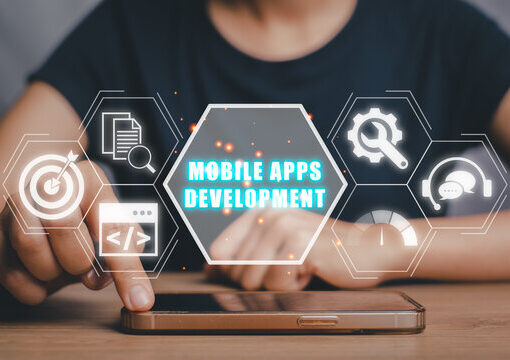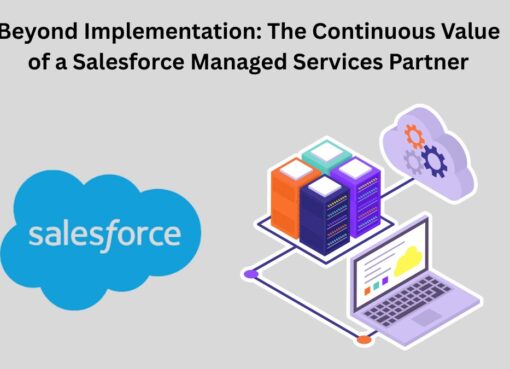What Is Real World Asset Tokenization and Why Is Everyone Talking About It?

The financial world is undergoing a major shift. In 2025, one of the most transformative ideas gaining global attention is real world asset (RWA) tokenization. But why is it being talked about everywhere—from boardrooms and fintech panels to regulatory forums and Twitter threads? Simply put, it’s because tokenization is changing how we think about ownership, liquidity, and access to traditionally illiquid assets. Real estate, art, commodities, private equity, and even carbon credits—these are just a few of the physical or off-chain assets now entering the blockchain economy.
Tokenization promises to bridge the gap between traditional finance (TradFi) and decentralized finance (DeFi). With its potential to unlock trillions of dollars worth of assets and bring them onto programmable, transparent platforms, it’s no wonder the world is paying close attention.
Defining Real World Asset Tokenization
At its core, real world asset tokenization refers to the process of converting ownership rights of physical or non-native digital assets into blockchain-based tokens. These tokens are cryptographic representations that can be traded, transferred, or divided into smaller units on distributed ledger technology. This conversion doesn’t just digitalize the asset—it makes it accessible, programmable, and interoperable within the blockchain ecosystem.
The most common types of RWAs include real estate properties, gold, collectibles, invoices, and private company shares. These tokenized forms are typically issued as security tokens, stablecoins backed by physical reserves, or NFTs with embedded legal contracts. The key element is that the token must be backed by a verifiable and enforceable claim on a tangible or real-world asset.
How Tokenization Works: The Mechanics Explained
The process of tokenizing a real world asset involves several layers. First, the asset must be legally verified and valued. A legal framework or agreement must ensure that the digital token is enforceable and corresponds to the physical asset it represents. This often requires a custodial or trustee service that holds the real-world asset on behalf of the token holders.
Once verified, the asset is represented on-chain using smart contracts. These smart contracts define ownership rights, transfer logic, access control, and compliance protocols. The tokens are then issued to investors, who can trade them on secondary markets or use them as collateral within decentralized finance platforms.
Behind the scenes, legal compliance, off-chain data feeds (oracles), and custodial arrangements make the system robust. Together, these elements enable secure, auditable, and regulatory-friendly interaction between real world assets and blockchain environments.
Why Real World Asset Tokenization Matters Today
There are several reasons why real world asset tokenization is such a hot topic right now. First, traditional assets are often locked in structures that make them illiquid, expensive to transfer, or hard to fractionalize. Think of a $10 million office building or a rare piece of art. Few people can afford to buy them outright, and ownership is difficult to split or sell in parts.
Tokenization flips that script. By breaking assets into smaller tokenized units, it enables broader participation and fractional ownership. It democratizes access to investment opportunities that were previously available only to institutional investors or ultra-high-net-worth individuals.
Another critical reason is the demand for transparency and efficiency. Blockchain-based tokens are programmable, which means ownership history, compliance rules, and transaction terms are embedded in the code. This reduces the need for multiple intermediaries, slashes administrative costs, and speeds up settlement times from days to minutes.
Use Cases Gaining Momentum
The most prominent use case for RWA tokenization is in real estate. Residential and commercial properties are being tokenized to enable fractional ownership, easier trading, and access to global capital. Investors in the U.S. can now buy shares of a building in Dubai or Singapore with a few clicks and full legal rights.
Precious metals like gold are also gaining traction. Instead of holding physical bars, investors can purchase gold-backed tokens that represent a claim on stored bullion in secure vaults. These tokens are easier to trade, store, and transfer compared to their physical counterparts.
Private equity and venture capital are being reshaped too. Startup shares, often locked up for years, can now be fractionalized and offered to a wider investor base. This provides liquidity options to early backers and enables more inclusive capital formation for startups.
Other examples include invoices and receivables, where tokenization helps businesses access liquidity by turning future cash flows into tradable digital assets. Similarly, carbon credits and renewable energy certificates are being brought on-chain to improve traceability and market efficiency.
Benefits Driving Widespread Adoption
One of the most attractive features of real world asset tokenization is increased liquidity. Traditional assets like real estate, art, or private shares are notoriously illiquid. Tokenization makes it easier to buy and sell fractional interests in these assets through secondary markets.
Another key benefit is fractional ownership. Instead of needing millions to invest in commercial real estate, investors can gain exposure with a few hundred dollars. This opens up wealth-building opportunities to a much broader audience.
Transparency and security are also major advantages. Every transaction is recorded on a blockchain, creating an immutable audit trail. Smart contracts also enforce rules automatically, reducing reliance on intermediaries and manual paperwork.
Additionally, global accessibility is a powerful outcome. Tokenized assets can be accessed by users worldwide, eliminating the traditional barriers of geography, banking infrastructure, or minimum investment size. This creates new channels for cross-border capital flows and global investment diversification.
Challenges and Regulatory Considerations
Despite its promise, RWA tokenization is not without hurdles. The biggest challenges come from the legal and regulatory front. Each jurisdiction has its own rules regarding securities, property ownership, taxation, and custodial services. Ensuring that tokens are legally enforceable and compliant across borders is a significant task.
There’s also the issue of custody and trust. Token holders need assurance that the physical asset exists, is well-managed, and is accessible in case of legal disputes. Custodians and trustees play a critical role here, and their processes must be auditable and transparent.
Furthermore, technical risks such as smart contract bugs, poor governance mechanisms, or oracle manipulation can compromise the security of tokenized systems. Therefore, rigorous audits, real-time monitoring, and decentralized governance frameworks are vital to building trust.
Why Institutions and Enterprises Are Joining In
Major financial institutions, real estate firms, and asset managers are now exploring or piloting tokenization solutions. Firms like BlackRock, Goldman Sachs, and Fidelity have either launched tokenized funds or are investing in infrastructure to support digital assets. This institutional momentum brings credibility, regulatory pressure, and capital into the space.
Enterprises are especially drawn to the efficiencies offered by tokenization. For example, a property developer can raise funds by tokenizing parts of a development project. A supply chain firm can tokenize warehouse receipts to unlock working capital. The integration of RWA tokens into enterprise systems and ERP software is making real-world applications increasingly viable.
This convergence between blockchain infrastructure and enterprise utility is a major factor behind the current hype. It’s not just a speculative trend—it’s a serious innovation with wide-reaching implications.
Real World Asset Tokenization and DeFi Integration
A particularly exciting frontier is the integration of RWAs into decentralized finance protocols. Instead of using only crypto-native assets like ETH or USDC as collateral, DeFi platforms are beginning to accept tokenized real estate, invoices, or commodities.
This hybrid model brings stability and diversity into DeFi markets while allowing real-world asset holders to tap into decentralized liquidity pools. Protocols like Centrifuge, MakerDAO, and Ondo Finance are leading the way, enabling RWA tokens to be used in lending, yield farming, and structured financial products.
This trend underscores how tokenization isn’t just replicating TradFi—it’s building something fundamentally more inclusive and efficient.
Why Now? The Timing of the Tokenization Boom
Several forces are converging in 2025 to make tokenization more relevant than ever. Technological maturity, regulatory clarity in key markets, and growing institutional appetite are all contributing. Blockchain infrastructure has become more scalable and energy-efficient, thanks to innovations like rollups and proof-of-stake consensus models.
At the same time, global investors are seeking yield, transparency, and diversification in a volatile macroeconomic landscape. Tokenization offers precisely that—programmable assets with global reach and lower costs. As trust in centralized institutions wanes, the decentralized and verifiable nature of tokenized assets becomes increasingly attractive.
Conclusion: Why Everyone’s Talking About RWA Tokenization
The conversation around real world asset tokenization is not just hype—it’s a recognition of a deeper transformation underway in finance, ownership, and access. By converting physical and traditional assets into programmable, fractional digital tokens, tokenization is unlocking entirely new financial ecosystems.
It promises greater liquidity, wider access, and enhanced transparency while bridging the gap between traditional finance and the digital economy. Whether it’s real estate in New York, gold in Zurich, or a startup in Bangalore—everything is becoming tokenizable, tradable, and accessible like never before.
As infrastructure matures and regulations evolve, tokenization is set to become a defining pillar of the global financial system. That’s why everyone—from retail investors to institutional giants—is paying attention. Because the future of ownership is no longer just physical—it’s digital, fractional, and on-chain.







Leave a Comment